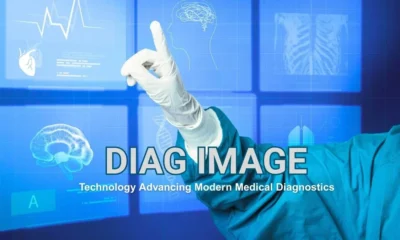AI
Cruciais: Optimizing Processing Tasks in Digital Environments

Cruciais are specialized computational units designed to enhance the efficiency of processing tasks in digital environments, especially within artificial intelligence (AI) and data-heavy contexts. The term “Cruciais” is derived from the fusion of “crucial” and “AI,” underscoring their importance in modern computing. These units are tailored to handle complex workloads that demand precision, speed, and scalability. As digital systems continue evolving, their role becomes increasingly critical for applications that require fast, intelligent decision-making, ensuring smoother operations in industries like healthcare, finance, and manufacturing.
How Cruciais Differ from Traditional Computational Units
These units are distinct from CPUs and GPUs, offering specialized capabilities. While CPUs are general-purpose processors and GPUs excel at handling parallel tasks, These units focus on specific AI and machine learning workloads. Their architecture prioritizes speed and precision, allowing them to outperform conventional processors in tasks like real-time image recognition or predictive modeling. Furthermore, they feature low-latency processing, essential for time-sensitive applications such as autonomous systems. Unlike GPUs, which require extensive power, Cruciais are designed with energy efficiency in mind, making them ideal for edge computing environments.
Applications of Cruciais in Artificial Intelligence
- Machine Learning Models: Cruciais enhances training times for deep learning models, accelerating pattern recognition and decision-making processes.
- Natural Language Processing (NLP): These units optimize language models for faster sentiment analysis, text generation, and translation.
- Computer Vision: Cruciais enables real-time image and video processing, supporting tasks like object detection and facial recognition.

Cruciais for Data Processing and Big Data Analytics
These units play a pivotal role in managing and analyzing massive datasets. Traditional processors struggle with the volume and velocity of big data, but they are engineered to handle these challenges. They support distributed computing systems, ensuring smooth performance even with real-time data streaming. Predictive analytics powered by Cruciais enables businesses to forecast trends, identify risks, and make informed decisions. Their ability to process data quickly and accurately makes them invaluable in sectors like finance, marketing, and logistics, where timely insights are critical.
Architecture and Design of Cruciais
- Core Components: Cruciais features specialized cores optimized for specific AI workloads, ensuring high performance.
- Energy Efficiency: These units integrate cooling systems and power management to minimize energy consumption and prevent overheating.
- Modularity: Cruciais are designed to scale across systems, ensuring seamless upgrades for evolving digital environments.
Cruciais in Cloud and Edge Computing
Cruciais bridge the gap between cloud and edge computing by enabling efficient processing at both ends. In cloud environments, they accelerate the training of large-scale AI models, ensuring faster deployment of services. On the edge, these units empower devices to process data locally, reducing reliance on cloud infrastructure and minimizing latency. This is especially beneficial for IoT applications, where real-time decision-making is crucial. For instance, smart cameras equipped with Cruciais can analyze footage instantly, triggering alerts without sending data to the cloud.
Challenges in Implementing Cruciais
Adopting these units in mainstream computing presents several challenges. Scalability is a primary concern, as integrating Cruciais into existing infrastructures requires careful planning. Hardware limitations, such as production bottlenecks and supply chain issues, can hinder widespread deployment. Moreover, they are still relatively expensive compared to traditional GPUs, making them less accessible for smaller organizations. Software compatibility is another hurdle, as AI frameworks need to be optimized to leverage these units effectively. Overcoming these challenges will require collaboration between hardware manufacturers, software developers, and businesses.
Comparing Cruciais with GPUs and TPUs
- Speed: These units offer higher speed for specific AI tasks compared to GPUs and TPUs.
- Specialization: While GPUs handle general-purpose tasks, they focus solely on AI workloads.
- Energy Efficiency: These units consume less power, making them ideal for edge computing.
- Cost: These units are more expensive but provide better value for highly specialized applications.
Security and Ethical Concerns
I believe that the deployment of these units poses a great security and ethical dilemma to TE. Since these units’ AI systems can be used for making decisions that often affect large numbers of people, it is crucial to maintain transparency and fairness in the resulting decision-making process. Such units could be misused to design malicious content, including deep fakes or manipulating the data generated. Measures that should be put in place include safety features such as operational security, access control, and mode of encryption, and they should be built within ethical standards. The role of policymaking and that of the developers is, therefore, to develop laws that would govern the use of these units so as to maintain the essence of innovation while discouraging the development of applications and systems that would pose a threat to the public and erode their trust.

Cruciais and Sustainability
Sustainability is a key consideration in the development of these units. These units are designed to be more energy-efficient than traditional processors, contributing to reduced carbon footprints. Their ability to process data faster also means less time spent running high-power computing systems. In industries focused on sustainability, such as renewable energy and smart agriculture, they enable optimized solutions that minimize waste and improve efficiency. As more companies adopt sustainable practices, the demand for energy-efficient units will continue to grow, further aligning technology with environmental goals.
Essentials in Academic Research and Development
Many academic institutions are engaged in research with reference to the enhancement of these units for various uses. To refine the components and discover other applications, the universites team up with the technology firms. They are also used in AI research platforms, where students and researchers can play with state-of-the-art systems. All these endeavours not only help in the growth of AI but also in the development of a global generation of computing experts. Stakeholders use conferences and journals to present their research work, guaranteeing that society continues to benefit from enhanced innovations.
Market Trends and Adoption of CriticalTechnologies
Increased awareness of this for use in various industries is opening new markets to producers quickly. These units have gained popularity with large organizations, which are the initial drivers of such innovations, although small companies and start-ups are now following suit. Experts in the global market have said that the need for this will continue to increase gradually in the future due to the development of artificial intelligence and edge computing. They are emerging as a new normal, finding applications in data centers, cloud services, and IoT meshes. As its use rises, manufacturers are now seeking to cut various costs associated with this newer technology in several industries.
Future Prospects and Innovations
The future of this is promising, with exciting innovations on the horizon. Researchers are exploring ways to make Cruciais even faster and more energy-efficient. Integration with quantum computing is expected to unlock new possibilities in AI and data processing. In the coming years, Cruciais could become a standard feature in consumer devices, enhancing everything from smartphones to smart homes. These developments indicate that they will continue to shape the future of computing, driving innovation and enabling new technological breakthroughs.
Conclusion
Cruciais represents a significant advancement in computing technology, offering specialized solutions for AI and data processing. Their ability to optimize complex tasks makes them invaluable across industries, from healthcare to manufacturing. While challenges remain, ongoing research and innovation are paving the way for broader adoption. As these units continue to evolve, they will play a pivotal role in shaping the future of digital environments, enabling smarter, faster, and more sustainable solutions.
-

 BIOGRAPHY7 months ago
BIOGRAPHY7 months agoBehind the Scenes with Sandra Orlow: An Exclusive Interview
-

 HOME1 year ago
HOME1 year agoDiscovering Insights: A Deep Dive into the //vital-mag.net blog
-

 HOME1 year ago
HOME1 year agoSifangds in Action: Real-Life Applications and Success Stories
-

 BIOGRAPHY1 year ago
BIOGRAPHY1 year agoThe Woman Behind the Comedian: Meet Andrew Santino Wife




























